- Reference Number: HEY1379/2023
- Departments: Respiratory Physiotherapy
- Last Updated: 31 October 2023
Introduction
This leaflet has been produced to provide instructions on how to effectively clear your chest using the Acapella secretion clearance device. Most of your questions should be answered by this leaflet. It is not intended to replace the discussion between you and your physiotherapist, but may act as a starting point for discussion.
If after reading it you have any concerns or require further explanation, please discuss this with a member of the healthcare team caring for you.
What is the Acapella?
People with lung problems often produce more phlegm (sputum) than is usual. It is important to remove sputum from your lungs to help you breathe easier, reduce coughing and prevent chest infections.
The Acapella is a small hand held device used for airway clearance. It has both resistive and vibratory features, which help loosen and clear secretions from your chest.
How to use the Acapella
Make sure the resistance is set correctly. This can be adjusted moving the dial to the left or right at the end of the device. This will initially be set by your physiotherapist.
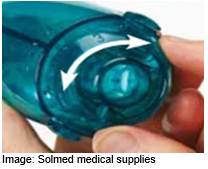
Place the mouthpiece in your mouth and ensure you have a tight seal around it with your lips.
Breathe in slowly through your nose and slightly deeper than normal.
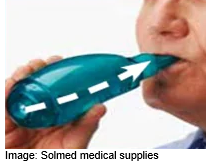
Pause for two to three seconds to allow your lungs to fill properly.
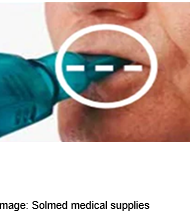
Breathe out through the device actively but not forcefully for approximately three to five seconds so that you feel the vibrations in your chest but do not empty your lungs. Ideally Keep your cheeks flat and firm to maximize treatment effectiveness.
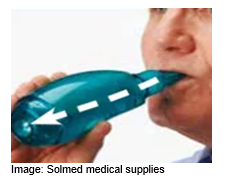
Repeat and use a ”huff” as indicated. Your Physiotherapist will instruct you on how many times this should be completed.
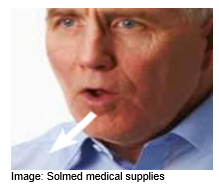
Cleaning your Acapella
After each use the device can easily be broken down for cleaning and to sterilise if required.
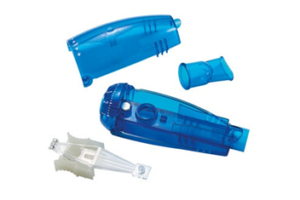
These can be cleaned using:
- Warm water and soap, rinse and air dry.
Once a week you should sterilise your device:
- Boiling in distilled, deionised or de-mineralised water for five minutes
- Steam sterilised
Please refer to the manufacturer’s instructions for several other recommended methods.
Ensure you sterilise your Acapella after each chest infection.
The Acapella should be replaced every 6 months or immediately if damaged.
Your Acapella Guidance
When: (You will be advised by your Physiotherapist)
How long: (You will be advised by your Physiotherapist)
What position should I be in to use the Acapella: (You will be advised by your Physiotherapist)
Should you require further advice on the issues contained in this leaflet, please do not hesitate to contact the Bronchiectasis/CFDepartment on tel no: 01482 622495.
General Advice and Consent
Most of your questions should have been answered by this leaflet, but remember that this is only a starting point for discussion with the healthcare team.
Consent to treatment
Before any doctor, nurse or therapist examines or treats you, they must seek your consent or permission. In order to make a decision, you need to have information from health professionals about the treatment or investigation which is being offered to you. You should always ask them more questions if you do not understand or if you want more information.
The information you receive should be about your condition, the alternatives available to you, and whether it carries risks as well as the benefits. What is important is that your consent is genuine or valid. That means:
- you must be able to give your consent
- you must be given enough information to enable you to make a decision
- you must be acting under your own free will and not under the strong influence of another person
Information about you
We collect and use your information to provide you with care and treatment. As part of your care, information about you will be shared between members of a healthcare team, some of whom you may not meet. Your information may also be used to help train staff, to check the quality of our care, to manage and plan the health service, and to help with research. Wherever possible we use anonymous data.
We may pass on relevant information to other health organisations that provide you with care. All information is treated as strictly confidential and is not given to anyone who does not need it. If you have any concerns please ask your doctor, or the person caring for you.
Under the General Data Protection Regulation and the Data Protection Act 2018 we are responsible for maintaining the confidentiality of any information we hold about you. For further information visit the following page: Confidential Information about You.
If you or your carer needs information about your health and wellbeing and about your care and treatment in a different format, such as large print, braille or audio, due to disability, impairment or sensory loss, please advise a member of staff and this can be arranged.
